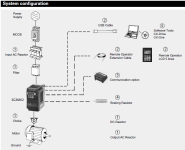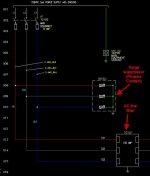I am currently working on a project with a machine builder and for some reason they didn't install an AC line filter after the main AC power disconnect. I always thought this was good practice. Why wouldn't you include one? The machine has a VFD driving an AC motor (for a rotary dial table). I don't see a local noise filter at the input side (or the output side) of the VFD either. Is this wrong or is it OK to not use the AC filter?
Also would you use a surge suppressor for the incoming AC feeds?
Also would you use a surge suppressor for the incoming AC feeds?






